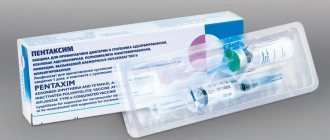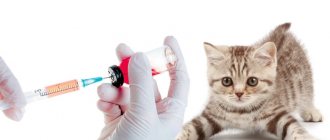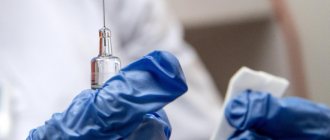If you made a mistake with a variety or seedling, everything can be corrected. That's what vaccinations are for. And you are not afraid of the apparent complexity of this procedure. If you figure it out, everything is simple. All you need is desire and some knowledge.
Grafting is a great way to quickly renew a garden in cases where it is not possible to uproot old trees.
In addition, the vaccine is also used for:
- formation of the desired crown skeleton, including for reducing the height of trees of vigorous varieties;
- replacing varieties that are not suitable for certain characteristics with more successful ones;
- preservation of the variety in case of damage to the trunk or aging of the tree;
- cultivation of seedlings and root shoots.
Vaccination will allow you to revive a neglected garden
In addition, gardeners actively use grafting to increase productivity and plant resistance to diseases and harsh climatic conditions.
What are rootstock and scion?
A scion is a cutting, bud or branch of a plant that is grafted and will determine the varietal characteristics of a tree or bush. The rootstock is the name given to the plant to which the desired variety is grafted. The rootstock can be a young tree, a broken or old tree, or even a wild plant.
The rootstock has a huge impact on the scion: its yield, the length of the growing season, resistance to adverse weather conditions, durability and much more. The reason for this is simple: the scion does not have its own roots, so it receives all the necessary nutrients and water from the roots of the rootstock.
Thus, in order for a garden tree to develop properly and bear fruit, you need to choose a rootstock that:
- adapts well to the weather conditions of a particular region,
- compatible with scion,
- has strong roots.
Rootstocks can be different: seed, vegetative, tall, short, etc. To understand which rootstock you need, look at our table.
| Classification | Type of rootstock | Characteristic |
| Reproduction method | Seed (seedling) - obtained from seeds (seeds) sown in autumn or spring | Trees grafted onto seedlings (even those obtained from the seeds of the same plant) differ significantly from each other in their main characteristics: winter hardiness, yield, compatibility with the scion, etc. In addition, they begin to bear fruit late and grow quite tall. |
| Vegetative (clonal) - obtained from cuttings (they are cut and rooted in the ground) | The plants obtained as a result of grafting are identical in their characteristics: early fruiting, fruit quality, frost and drought resistance, growth vigor, etc. Such trees, unlike plants grown on seed rootstocks, begin to bear fruit faster, are more resistant to pests, and have more compact size, and their fruits have excellent color and taste | |
| Vigor of grafted buds or cuttings onto the rootstock | Vigorous (seed rootstock) | As a result of grafting, a plant is obtained that is practically no different in early fruiting and growth vigor from the mother tree (5-7 m or more), the cuttings of which were grafted onto the rootstock |
| Medium-sized (seed and clonal rootstocks) | The height of the tree and the amount of harvest are reduced by approximately 10-20% compared to a tree (up to 4-5 m) grafted onto a vigorous rootstock; plants have a powerful root system | |
| Semi-dwarf (clonal rootstock) | The height of the plant is reduced by 25-40% (up to 3-3.5 m); Fruiting occurs already in the 2-3rd year after planting; trees have a powerful root system | |
| Dwarf (clonal rootstock) | Plant height is reduced by more than 50% (up to 2-3 m); Fruiting begins from the 2-4th year of life; the root system lies shallow. Trees on dwarf rootstocks, due to their small size, fragile root system and large yields, require more careful care and constant support |
Not all rootstocks and scions are well compatible. Rootstocks and scions of plants of the same species grow together best: an apple tree takes root well on an apple tree, a pear tree on a pear tree, etc.
To have a good harvest of apples , it is better to use seedlings of forest apple, Antonovka vulgaris, Anise, and plum-leaved apple trees as a rootstock; pears - wild forest pear, Japanese quince, red rowan, shadberry, chokeberry. The main seed rootstock for plums and cherry plums is local forms of cherry plum; cherries and cherries - wild cherries, Vladimir, Lyubsk cherries, as well as local varieties of this crop; apricot - seedlings of wild apricot and cherry plum.
Preparing cuttings for grafting
In order for the grafting of a garden tree to be successful, it is very important to prepare cuttings (scions) in a timely manner and properly store them.
Take cuttings from a healthy, well-bearing plant, or more precisely, from the outer part of its crown, which is more illuminated by the sun.
The best grafting material is annual shoots at least 5-6 mm thick, with 3-4 mature and fairly closely spaced buds. The optimal cutting length is 30-40 cm.
When you take cuttings, look at them carefully. A brown core on the cut is a sure sign that the cutting is frozen. It should not be used as a grafting material.
Short (8-10 cm) cuttings, as well as cuttings that are too thin or crooked with poorly developed buds, are also not suitable as a scion.
For grafting, it makes sense to prepare at least 10-15 cuttings of each variety. Having done this, you don’t have to be afraid of losing all the grafting material during storage, and choosing a cutting of the appropriate thickness during the procedure will also not be difficult.
It is convenient to cut cuttings with sharp pruning shears. If necessary, the grafting material can be cleaned with a sharp knife.
Scions for spring and winter grafting are prepared in the fall, at a time when the trees have already lost their leaves, but frost has not yet set in (in the middle zone this is the end of October - beginning of November). To avoid confusion later, divide all the cut cuttings by variety and tie each variety into a separate bundle, attaching a label with the name to it.
Cuttings of cuttings can be coated with garden varnish. This way the grafting material will be better stored.
You can also start preparing cuttings for spring grafting at the beginning of spring, while the buds have not yet swelled.
On the same day, in a dry place where water does not accumulate in the spring, dig a small trench about 25 cm deep, place the cuttings in it, having previously wrapped the cut side with film, and cover them with earth. Be sure to cover the top of the trench with straw or fallen leaves, as well as snow when it falls. To protect the scion from mice, it can also be covered with fiberglass.
You can also store cuttings in the basement in wooden boxes filled with sawdust, or on the bottom shelf of the refrigerator, wrapped in a wet rag and a bag.
The cuttings should be removed from the shelter no earlier than a day before grafting.
Cuttings for summer grafting are cut immediately before the procedure. They must have at least two well-developed buds. The base of the grafting material should be woody.
How to keep your child calm?
- You should not scare a child with doctors - say “uncle will swear”, “you’re the only one here who’s afraid” and other phrases that seem to be aimed at increasing courage. This can leave a negative impact on all subsequent visits to the clinic and on taking care of your health in general.
- If the child is an adult, explain to him why vaccinations are needed and what the doctor will do.
- If your child asks if the vaccine hurts, be honest with him. Say that this is not very pleasant, but it is temporary and will pass in a few minutes. Tell them that you also did such injections, and nothing bad happened. This way you will calm the child and at the same time prepare for the vaccination.
- For peace and comfort of the child, you can take his favorite toy.
- Try not to worry yourself. Children feel everything, feelings and anxiety are easily transferred from parent to child. Behave calmly and confidently, communicate, play, do not be silent and smile at your baby. We know there will be a little anxiety, but try to deal with it.
- If a child wants to cry, let him cry. There is no need to scold him for his tears and say that crying is shameful and ugly.
- Do not rush to quickly leave the clinic after the procedure. Stay near the office for a while, let the child calm down, drink water or tea together. Firstly, the child will understand that this area is safe for him, and secondly, doctors will be able to provide assistance in case of undesirable reactions to the vaccine.
The simplest ways to graft trees
There are many ways to graft fruit trees. However, the most common and simple ones are three:
- copulation,
- bark grafting,
- grafting into cleft
Copulation - grafting with a cutting with 2-3 buds. Tree grafting using this method is usually carried out in early spring, before sap flows. The main condition for successful copulation is the same thickness of the scion and rootstock, on which oblique cuts are made at the same angle and the same length. To complete the procedure, the slices should be aligned and securely fixed.
Copulation is more likely to be successful if cuttings harvested in late autumn are used for grafting
Grafting by bark is the main advantage of this method of merging plants over others in that it allows you to use rootstock and scion of different thicknesses. The best time to graft trees by bark is during the period of active sap flow (end of April - first half of May). To accurately determine the time of grafting, you can cut one of the branches of the rootstock (the tree that you plan to regraft) and check whether the bark is separated from the wood. If yes, splicing can be safely carried out.
When grafting behind the bark, the scion and rootstock grow together very slowly, and the likelihood of the grafting material breaking off is quite high
Cleft grafting is perhaps the most popular grafting method. It is used in cases where the diameter of the rootstock is 2 or more times larger than the diameter of the scion. It also makes sense to graft into a cleft when the above-ground part of the plant has died for some reason.
To perform this grafting, you first need to cut down the branch or trunk of the rootstock, and then, exactly in the middle of the cut, carefully split the branch to a depth of 3-5 cm with a hammer blow. Insert a wedge-cut cutting into this split (or 2 cuttings if the shoot is very thick) so that it the cambium and the cambium of the rootstock coincide and fix.
Cleft grafting should be done in the spring, just before the buds begin to swell.
What do you need to know before vaccination?
- Before vaccination, you must complete and sign “informed voluntary consent to medical intervention.” Without this document, no one has the right to vaccinate your child, either in a clinic, or in a kindergarten, or at school. Only mom or dad can sign such consent. Other family members - grandparents, uncles and aunts are not legal representatives.
- Before the procedure, it is necessary to undergo a doctor’s examination and assess the child’s well-being. He conducts a thorough survey to identify previous diseases, including chronic ones, allergic reactions to medications and dietary habits of the body. In rare cases, your doctor may order tests or recommend consultation with other specialists before vaccination.
- Ask your doctor about possible post-vaccination reactions. He will tell you what to expect. For example, an increase in temperature is a normal reaction of a healthy child’s body.
- Make sure that when carrying out vaccination, immunobiological drugs are used that are registered in accordance with Russian legislation. You must know for what and what kind of vaccine the child will be given. If in doubt, be sure to ask your doctor about everything.
- If more than one vaccination is carried out on one day, then they are placed in different parts of the body and each with a new syringe.
- If you missed the vaccination dates, you need to contact your pediatrician to set new dates.
- If you have a vaccination certificate, take it with you on the day of vaccination. An immunization certificate is a document that records all the vaccinations given to a child from the beginning of life. The doctor will add information about the new vaccination there. If it is being done for the first time or you have not obtained a certificate before, then simply ask the doctor to issue you such a certificate.
The certificate will be useful before entering kindergarten and school, as well as when changing your pediatrician or when traveling long distances.
When can you vaccinate?
In principle, garden plants can be grafted all year round. However, if you do this in winter, the probability that the cutting will not take root is too high (up to 90%). Therefore, it is still better to carry out this procedure during periods of active sap flow:
- in spring (from March to early June),
- in summer (from the last ten days of July to mid-August).
The best time for grafting stone fruits is the end of March - early April, and the best time for pome trees is the beginning of April - mid-June.
Autumn grafting is not always successful, because it is quite difficult to predict exactly when frost will come.
How to properly graft trees and bushes?
It is better to splice a cutting (or bud) of one plant with a shoot of another on a cloudy but not rainy day. Prepare for the procedure in advance.
First, about 2 weeks before day X, loosen the soil around the rootstock, weed and water it if necessary. Secondly, immediately before grafting, prepare your tools and soak the cuttings in cold water for a day (or at least overnight). Third, choose the grafting site (usually grafted into the lower part of the tree). Only after this can we begin merging.
When vaccinating, follow safety precautions, because sharp tools are used to perform the work. It makes sense for inexperienced gardeners to practice before the procedure: learn how to make simple cuts on soft trees.
How to prepare your child for vaccination
HOW TO PREPARE A CHILD FOR VACCINATION
Vaccination is a way to build resistance to infections. The child is injected subcutaneously with weakened pathogens that do not cause disease but instead form stable immunity.
For your child to benefit from vaccination , he or she must be healthy. Then his body will respond correctly to the introduction of an infectious agent. You cannot vaccinate during any acute or acute chronic illness. The more severe the disease, the longer the recovery period will be.
In order to minimize complications , discuss the vaccination plan and preparation for vaccination with your doctor in advance, ask all your questions. If your child has a chronic disease, consult a healthcare professional before vaccination.
Let's say that you are going on a trip with a child , in this case, expect that the vaccination should be done 2-3 weeks before the trip so that the body has time to develop immunity, or 2-3 weeks after returning from the trip.
A FEW DAYS BEFORE THE INTENDED VACCINATION:
- Children under 1 year of age should not be introduced to new foods. If the child is breastfed, the mother also needs to give up foods new to the child and limit highly allergenic foods - fish, eggs, strawberries, citrus fruits, nuts, chocolate.
- Children under 1 year of age need to undergo a general blood test and a general urine test before vaccination. This will allow us to identify the initial and latent forms of the disease.
- Limit your child’s contact with a large number of people, as strangers can be carriers of infections.
- Assess your child's environment. Is everyone in the family healthy? Is there quarantine in kindergarten or school?
- Allergic reactions are the most common complication of vaccination, so preparation should be carried out only after consulting a doctor.
ON THE DAY OF VACCINATION:
- Pay attention to the child's well-being. If the child is more lethargic and capricious than usual and refuses to eat, it is better to postpone vaccination. Watch your child - perhaps these are the first signs of some disease.
- Take your child's temperature before vaccination, even if he is active and eating and sleeping well.
- Do not overfeed or force-feed your baby.
- The child should be examined by a pediatrician immediately before vaccination.
- of both the child and the parents is very important The calmer the mother is, the better the child will feel.
- For small children, it is better to take with them their favorite toy with which he will be comfortable.
- An older child should be explained in advance that the vaccination is a small injection, it will hurt a little, but it is necessary for his health.
- Do not deceive your child that there will be no injection, otherwise you will lose his trust. But don’t intimidate him with a vaccination or an injection as punishment for misdeeds.
- Be sure to praise and reward your child after vaccination.
AFTER VACCINATION:
- Immediately after the injection , calm your child down, but do not scold him for crying.
- Sit near your doctor's office for 30 minutes During this time, allergic reactions may occur.
- If you gave your child antihistamines before the shot, talk to your pediatrician about taking them for a few days afterward.
- Remember that after vaccination the child may have a fever. Don't be alarmed, this is a normal reaction of the body to vaccination. Measure the child's body temperature within 24 hours after vaccination. Be sure to discuss with your doctor at what temperature you should give antipyretics.
- For several days after vaccination, it is also necessary to follow a hypoallergenic diet and limit contacts, as before vaccination.
| We want you and your children to be healthy! |
For the vaccination to be successful
To ensure that tree grafting is successful, follow several important rules.
Rule 1. Take cuttings in advance
As already noted, the best time for harvesting cuttings is the end of October - beginning of November.
Rule 2. Work only with sharp and clean tools
For grafting, 2 types of knives are used - grafting and budding. The first has an elongated blade and a straight blade, so it is convenient for them to make long and even cuts on the grafting material. The budding knife is equipped with a special “bone” and is excellent for separating the bark from the rootstock.
For grafting, you can also use combination knives (on one handle there are 2 blades - budding and grafting), as well as halves of razor blades and dummy knives.
The budding blade of a combination grafting knife must be sharpened on both sides, and the grafting blade on one side.
Whatever grafting tool you decide to use, make sure it is sharp enough. If the blade is dull, it will not be possible to make neat cuts, and the fusion of the rootstock and scion will not occur.
The survival rate of cuttings also depends on the cleanliness of the tool used. Therefore, be sure to wipe it with a clean, damp cloth from time to time.
Rule 3. Do not allow dirt and dust to get on the cuts
Plant grafting carried out under sterile conditions will significantly increase the chances of successful fusion of cuttings and rootstock. Therefore, try not to touch the cut on the cutting with your hands, so as not to spread an infection to it. If the grafting material prepared for fusion falls to the ground, wipe it with a clean damp cloth and renew the sections.
Rule 4. Fix the grafting site well
To do this, you can use rubber bands, plastic bags cut into strips, or surgical gloves. You can also use duct tape or adhesive tape. A tight bandage will help the scion retain moisture.











